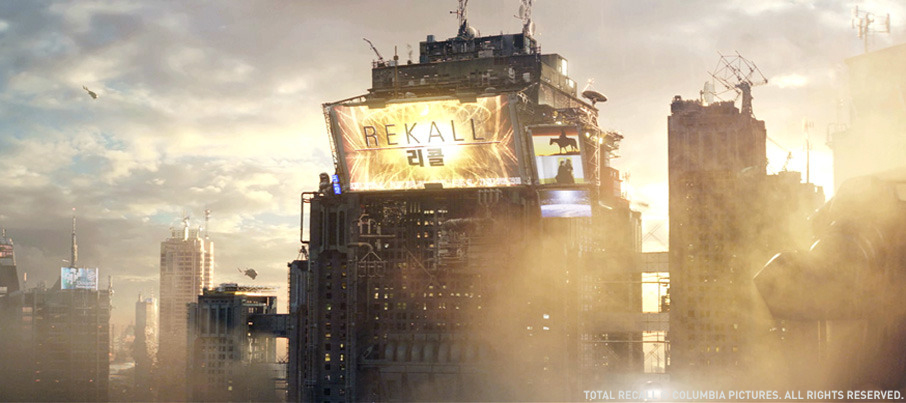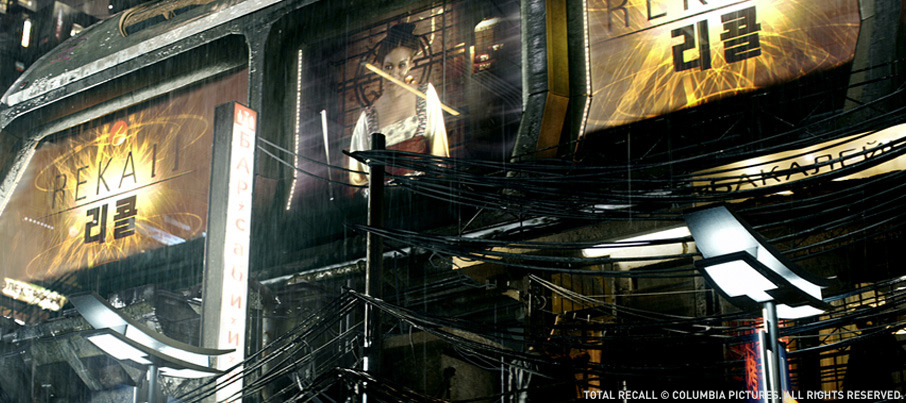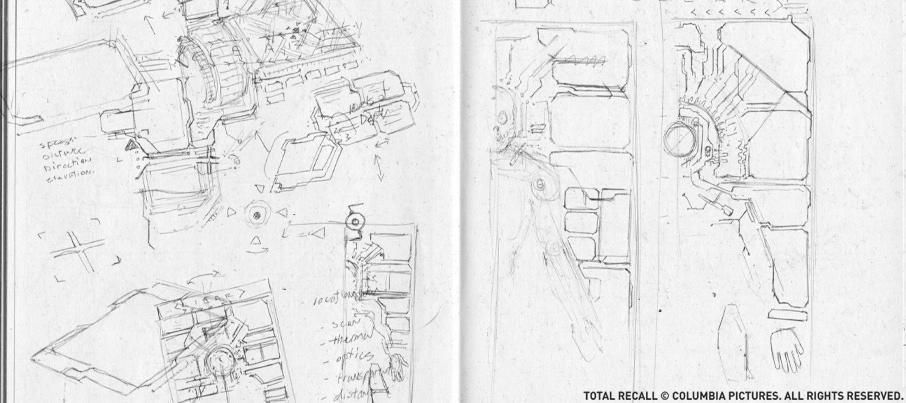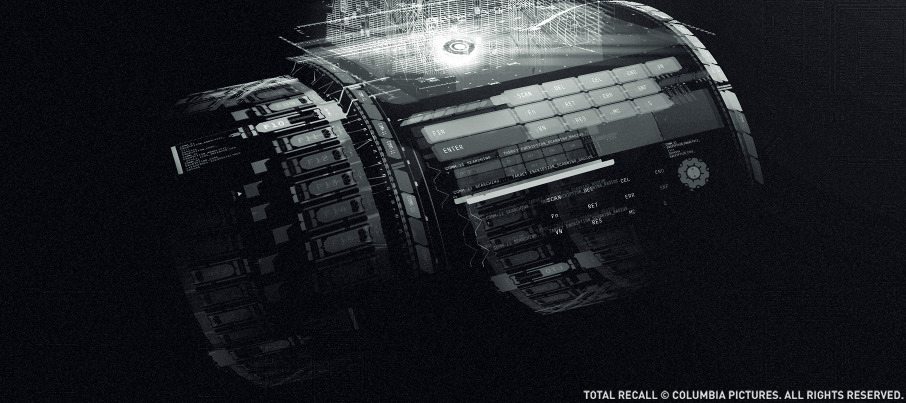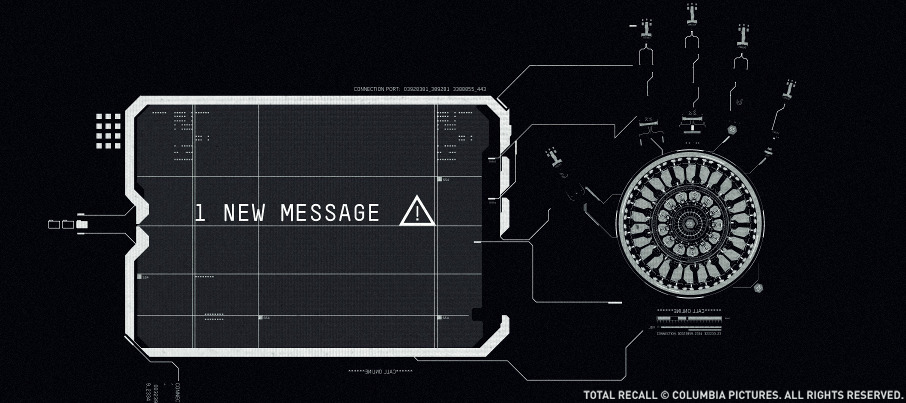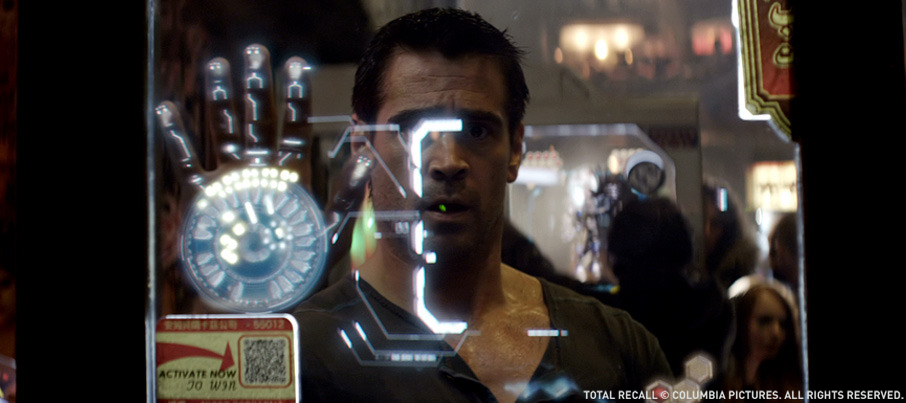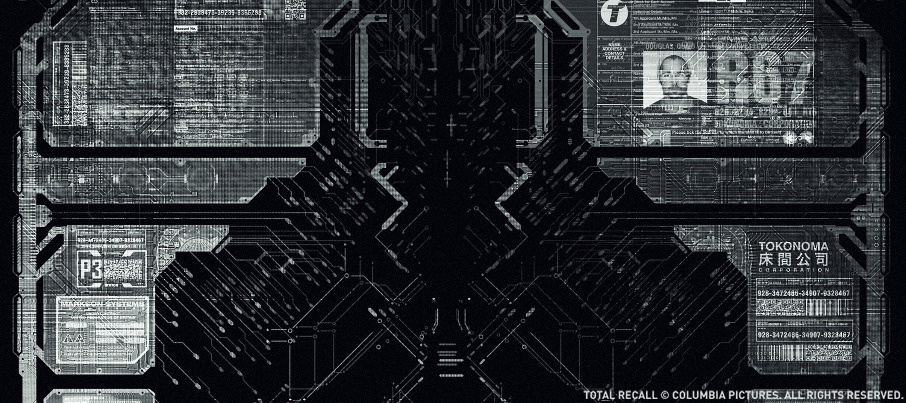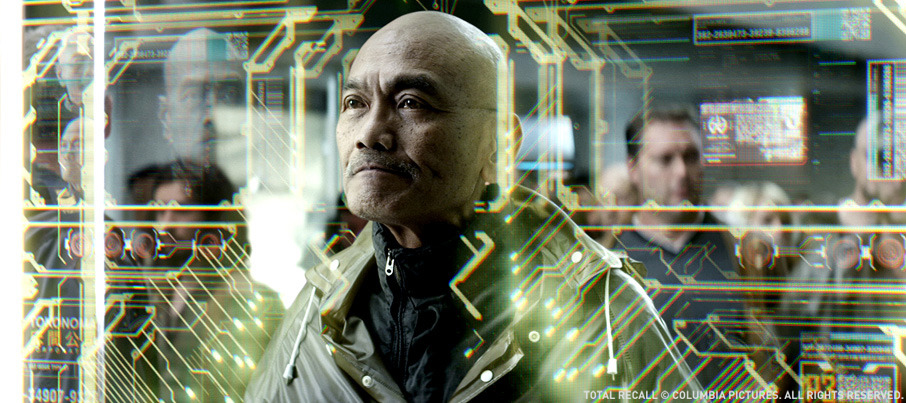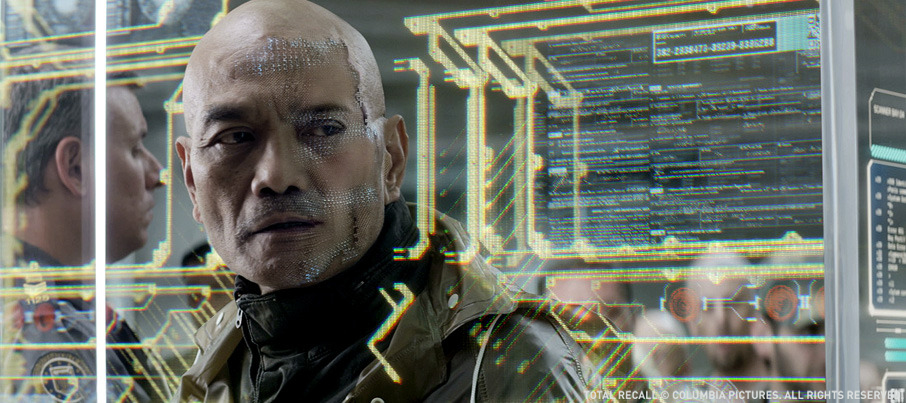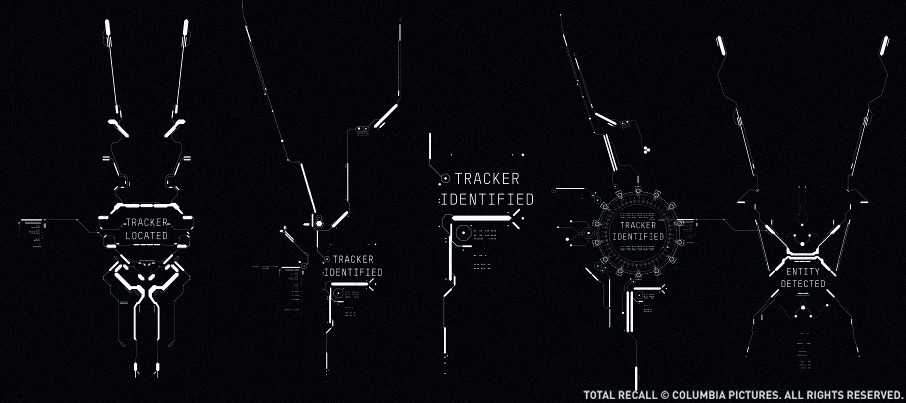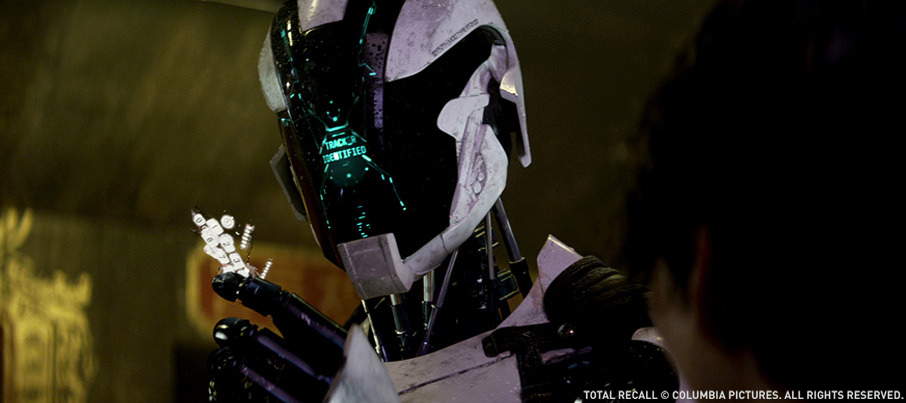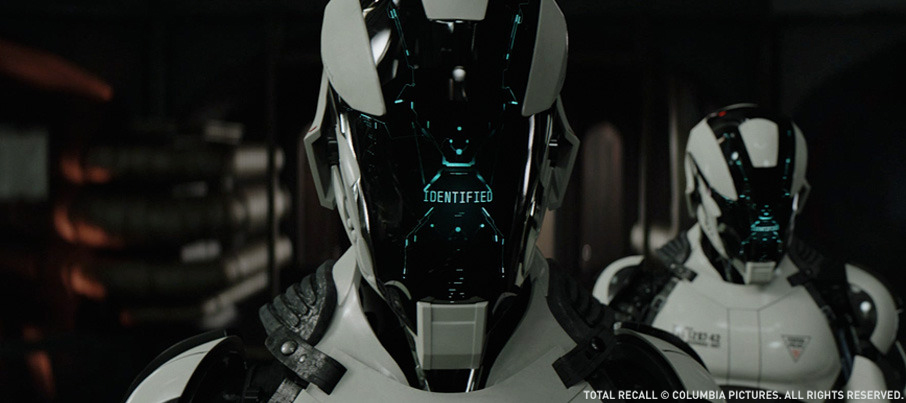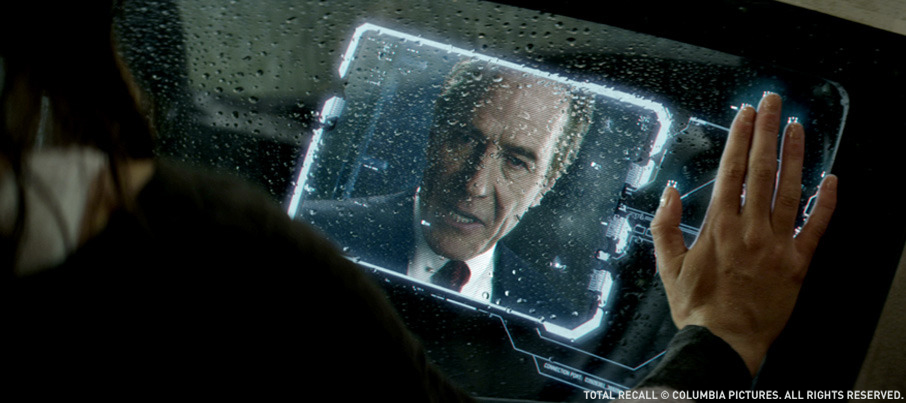Sean Farrow worked for over 10 years in VFX. He participated in many movie projects as BATMAN BEGINS, ANGELS & DEMONS, JANE EYRE or IRONCLAD and also on TV shows like BAND OF BROTHERS, ROME or MISFITS.
What is your background?
Long, winding and interesting. I’ve been creating visual effects for just over 13 years covering pretty much every aspect of visual effects. I’ve created film title sequences, both 3D and 2D, spent many years as a compositor, animator, concept artist, designer, and gradually moved onto more supervisory roles, such as sequence lead, sequence designer, sequence supervisor, assistant supervisor to visual effect supervising for facilities. I’ve worked as an on-set supervisor and production supervisor for a handful of Films and tv shows as well as associate and consulting supervisor on other projects. Essentially I thrive on interesting “problems”.
How did Lip Sync Post get involved on this show?
Lipsync has worked with Peter Chiang on a number of projects over the years (STARDUST, GREEN ZONE & UNITED 93). We have a great working relationship with him and he knows which areas of VFX we are particularly strong in. He approached us in October 2011 asking if we were available for a number of key sequences in TOTAL RECALL. Obviously we jumped at the chance to work with Peter again on such a high profile feature. He had such confidence in us that we were the first additional facility to come on board the project and were offered as many shots as we felt we would be able to deliver. It’s great to have that kind of belief shown in you as a facility by one of the world’s top VFX Supervisors.


How was the collaboration with director Len Wiseman and Production VFX Supervisor Peter Chiang?
It was a genuine pleasure to work with Peter and Len; they were both extremely articulate and both picked up pens to sketch out the principles what they were looking for. We would meet with Peter on a regular basis to talk through the more complex and creative briefs. Peter was great at getting to the nub of what each and every shot needed to achieve, which left us to work out all of the practical aspects as well as do a great deal of our own design and development. We’d also attend the more detailed briefings and feedback sessions with Len Wiseman so ourselves and Peter would go through our shots and get feedback all in one go.
What have you done on this show?
We were awarded 5 sequences in which to work on TOTAL RECALL. The first was the Dream sequence at the start of the show where Melina and Quaid are escaping from the bad guys. This sequence has significant clean up work, some set extensions and the Bolo Weapon at it’s most visceral.
The largest sequence in terms of shot count was the Tripping Den, which is the Rekall centre where Quaid goes to have memories implanted. Here we did some holographic screen work, an illuminated and animated tattoo and a whole host of military assault gadgets such as the Door Ram, ShrapCam and the ShrapCam Missile. There was also the design and creation of an interactive holographic display hanging off a Soldiers back-pack.
The third sequence was inside a terminal building where we designed the look of the infamous security scanners and some set extensions and crowd composites.
The fourth sequence was the first half of Mathias’ Lair, another tripping chair sequence where we did an extensive number of holographic screens and design work.
The final sequence we contributed to was the Melina Rescue sequence where Quaid gets to use the Bolo Weapon on the guards, with some help from our VFX bolo coils and fx.


Can you tell us more about the design and creation of the Bolo Weapons?
The Bolo Weapon was the most challenging aspect of our work on TOTAL RECALL. The principle of it had been worked out prior to shooting, however none of the dynamics had been realized. The weapon was based on a real ancient weapon, the bolo, which has three ropes with weights at the ends and is used a little like a lasso. However, TOTAL RECALL’s weapon was shot from a small assault gun, where a projectile is fired and upon impact breaks out into extremely fast, light enveloped, highly energetic, metallic tipped and restrictive coils. There was a practical prop made to wrap actors up, which was essentially many very bright white LEDs strung onto a solid metallic backing. This allowed production to shoot with a practical light effect in all shots where the coils were not animating into position. The production also developed a technique for shooting the very bright coils on “flare lenses”, which were essentially specially prepared anamorphic lenses with the coatings stripped off them. This gave a truly unique photographic, reflective and heavily flared effect in camera. Our challenge was to tell the very brief visual story of how the weapon was deployed and how the characters could swiftly become constricted by the coils.


We knew we had two very different remits; the animation of something with a plethora of physical liberties, and the live action photography which was very unusual to match to, but essential to make a believable weapon. The animation was achieved in a traditional staged process working with Peter and Len to get a sense of speed, an exaggerated sense of three-dimensionality and a physical presence enough to tie someone up in a moment. There was no procedural system in place which could do this since the physical space that the coils needed to travel was unreal. After body-tracking the characters and building a specially designed rig to allow the pulling out, the restrictive arcing, and the correct weighting of the coils, we animated each one individually to camera in pre-vis mode in order to get the pacing and scale feel right for Len. We would then apply our highly complex, multi-layered motion blur lighting passes to the coils and re-present. Since the look had such a dramatic effect on the feel of the animation we would need to go back and reanimate specific frames of certain coils to have more attractive individual frames in the sequence. The motion and lighting was a special challenge since Len really wanted to see more than just light. He was very keen to see a metallic element to the coils, which when surrounded by that much light, meant we had to do a lot of compositing trickery to get the darker, shinier metallic touches to be seen through massive motion blur and very bright lights.


Did Colin Farrell wears something for the interactive lights?
Colin wore a full practical set of coils in shots where there was no work required other than rig removal and clean-up. However there are two shots in the first sequence where he did not wear any practical coil lighting at all. We had to ensure our body-track was good enough to allow us to re-light his clothing underneath the bright and shiny coils. We achieved this in two shots which had to cut directly with the live action lighting and coils.
How did you create the illuminated Tattoo?
The creation of the Tattoo on the Rekall receptionist was a really interesting process. The production had a number of practical illuminating tattoos in the show, which was great reference for us in this scene. However the animation was something we developed with Len to avoid it looking like illuminated paint. The real challenge was making it look like self-illumination but not have the tattoo “lift” off her back. We used the live action shadows and blended through the tattoo. The trickier part of the shot was that the receptionist had a traditional full back tattoo which needed to be removed completely before applying our illuminated version. This was partly because the design was different but also because it was black and would have been seen through the gaps. These shots were challenging due to the precision with which we needed to track the tattoo onto her back when she didn’t have any tracking markers.

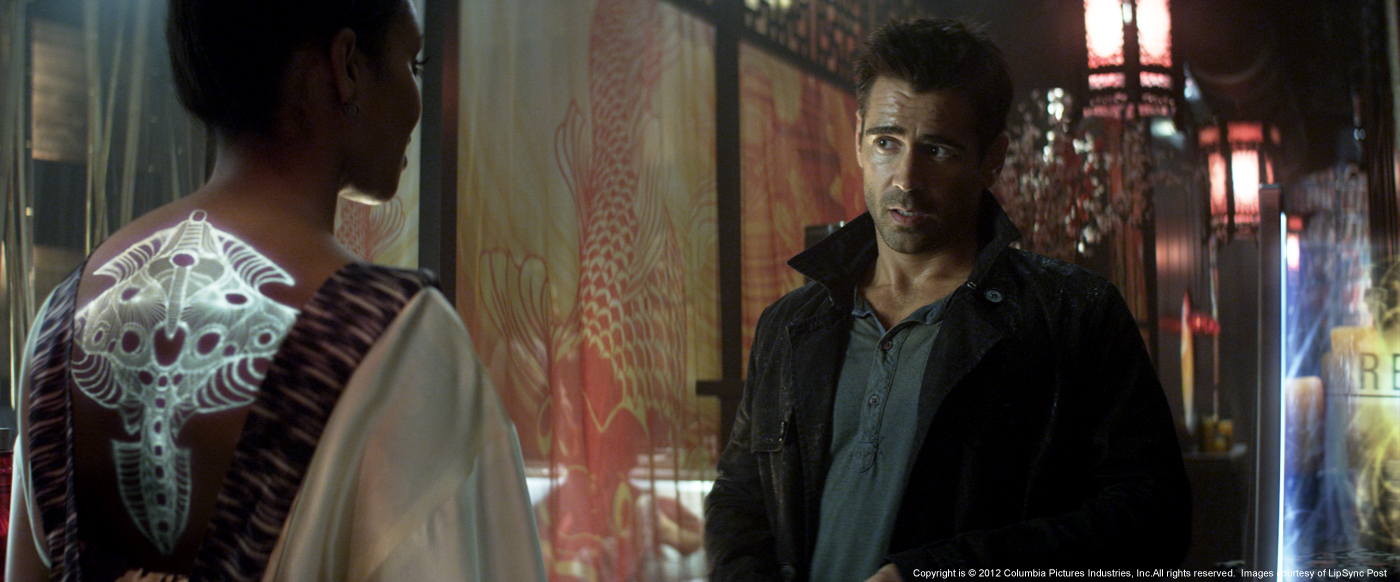
At a moment, Federal police use a lot of gadgets to catch Doug Quaid. Can you tell us more about these tools?
The gadgets in the Tripping Den were really fun to develop. We had a physical prop base for the DoorRam to start from, which was about an inch depth. We handed this over to our concept artist to sketch up a whole host of ideas of how it might look when it was fully extended and punched through. We drew a great deal of our ideas from practical rams and drills as well as military gun muzzles. We then future-ised them by combining those ideas with more interesting devices and materials. Once we got a feel for which concepts were working for Len, we moved onto the CG build and animation, which was important as this device needed to extend to about 5 times its depth and still look dangerous and solid enough to bust through a steel cased door. The interior of the ram, which features a drilling mechanism, was actually inspired by the drill machine vehicle in the original TOTAL RECALL, with the spinning drill bits and blades.


The ShrapCam missile, which is fired through the door into the room, already had a shape and scale in the practical prop. We designed the spikes, which extrude as it is placed into the gun, and developed the expulsion mechanism after it sticks into the wall and spits out hundreds of tiny ShrapCams. For this device we pretty much went straight to animation since so much of the physical design was dependent on how it dispensed the cameras. We also built a small version of the tiny flying cameras, both to fly around the room and also to replace an oversize prop on Quaids arm and under his foot with a CG version.


Can you explain to us more in detail the Backpack holographic?
There were two looks involved in the Backpack holographic sequence, both of which we developed and designed from scratch. The first was the POV view of one of the tiny cameras, technically named a ShrapCam. We design the graphical content, combined it with live action film footage, and applied a “scanning” and digital screen look to it to give the sense that you were inside the ShrapCam gathering information and surveying the room. Ultimately the information from these ShrapCams was broadcast back to the Soldiers Backpack.
The back pack display was a physical screen and base strapped to a Soldiers back which flipped down, enabling another soldier to access the broadcast images and information from the ShrapCams. We created the interface of the backpack screens, to enable interaction, and also to show just what was going on. Production had placed dozens of GoPro HD cameras in and around the Tripping Den set and shot everything on extremely wide lenses. We took this massive amount of digital footage and converted them into what the tiny ShrapCams were seeing. Over a hundred of these were then treated and comped into the back pack holographic interface to show what the ShrapCams were seeing throughout the room. The soldier “activates” the holographic function of the back pack, which then builds a 3-Dimensional sphere with all the key angles taken from the room. This moment also tied in with the CG camera we placed onto Quaids arm as he peels it off. The look and feel of this holographic was not reliant on anything else in the film, so we had free reign to develop a look which was cool, three dimensional, and was able to show what was going on inside the Tripping Den. Upon command the 3-Dimensional sphere of images translates into a holographic projection of the room, in which Quaid can be seen moving around. The look of the holographic room was a creative challenge, again to combine what looks cool and communicate clearly what the soldiers are able to see. We built the room based on Lidar scans of the set, which was then taken into Nuke. This enabled us to animate the room, globe and even Quaid within Nuke allowing us to keep a consistency of look and ensure we could tweak very specific moments and areas of the shot to suit the feedback. This whole process meant we could turn around fully fleshed out 3-dimensional versions quickly without having to go through the 3D pipeline.


Can you tell us more about the Terminal Scanner sequence?
We were very excited to develop the security scanner in the “Terminal” building due to its reference to an iconic scene to the original TOTAL RECALL. We were supplied a set of 2D motion graphics as a foundation template, which we took into Nuke and developed into a full 3D interactive holographic mini-environment with all the alternative scans for each individual passenger. We had numerous shots in the scene which had to have a continuous look as well changing when the action kicks off. This meant we needed to develop a look and a set of techniques which could be easily transferred to many other shots as well as other vendors who needed to follow the look of the scanner as we progressed. The scanner appears in other portions of the film. We additionally designed and animated the guard’s interactive graphics to follow the action precisely from shot to shot, again using similar “look” techniques that we’d developed for the main scanner. Also in this sequence we designed and animated holo-arrows traveling along passenger barriers as well holographic advertising boards near the ceiling. On top of that there were ATM graphics, boarding info panels, info holo-posters and animated glass holograms which Quaid eventually smashes though. There were a lot of visuals in these shots!


What was the real size of the set and how did you extend it?
Our set extensions were all incidental in the Terminal scene. Through the ceiling in a number of shots we would see the exterior of the cityscape, which was a supplied CG element comped and tracked in, in 3D space. The very end of the terminal was not as long as Len would have liked, so we created a digital matte painting projected onto cards in Nuke, along with green screen crowd elements and extended the Terminal to be four times longer than the location.
How did you create the crowd for the Terminal Scanner sequence?
Crowd replication is all about good lighting and realistic action by the performers. Some of the elements we used were taken from out-takes from the main film drama, but others were Green Screen elements shot specifically for our shots. Both methods worked out very well. The hardest part of this sequence was our head replacement shots. While in disguise, Quaids body has a different head. There’s no perfect technique to do a head replacement shot, and we used a range of number-crunching and hard work techniques to get ours just right. However, production had done a fine job shooting elements in the same lighting conditions but the principle of matching one persons moving head onto another required a great deal of re-timing, paint work, scaling and hand tracking.


Can you tell us more about the CG chair in Matthias lair?
This was a one off shot. 90% of the chair was a practical prop, with extending arm upon which holograms are projected. At the very start of the sequence when Quaid sits down, the arms move down and lock into place. We detailed a 3D model up from lidar scans and animated the arms along with some dynamic wires hanging off and reacting to the motion of the arms.


How did you design and create the various holographics in this sequence?
The kill-code sequence was a real storytelling challenge. The sequence in Matthias’ Lair had been in flux in the cut and really only settled with about 4 weeks before delivery. It was a complex set of story beats describing a specific set of actions, past and present, all played out of Quaid’s mind, and all of which needed to be communicated on the yet-to-be designed screens. Len described what he was after in very broad conceptual strokes and tasked us to come back with an animated sequence roughed into a near locked cut. We knew we had to get it close on the first pass otherwise we’d all be facing an even steeper challenge with the finish line approaching. We essentially did several processes in tandem. We designed the content graphics at the same time as designing the story reveal, developing a look for the holographics and prepping all of the shots for compositing. Normally we’d be waiting for graphic and then comp them in, but in this case, with so little time we needed to design and create everything in one timeline. The presentation of the first pass to Len went well enough for us to progress further with the sequence, and to know we were in the right area. We continued to develop all of the graphics, animations and the look of the composited screens as we got closer with the storytelling aspect. All completed in a little under those 4 weeks, which when you are starting from zero, is pretty good.


Were there any interactive lights on set to simulate the holo screens?
In most of our shots, no, and in fact it isn’t missed that much. That’s largely to do with the photography and also the absolute bombardment of holographic and screen images throughout the film, which tend to feel “in” the spaces but not overpowering and need a massive amount of interactive light.
What was the biggest challenge on this project and how did you achieve it?
This was the Bolo Weapon. Additionally to the flying and whipping coils, we also had the “connection” effect. This was the “invisible” connection between the gun and the wrapped coils. The idea of the weapon was that once a person was constricted you could whip the gun round, flinging your captive along with it. There was a strong creative movement to avoid anything too literal for this effect and to also make it look like nothing seen before. We developed over a dozen fully animated alternatives to the connection effect, which, after many iterations was narrowed down to one. The final effect was actually hand animated, frame by frame, much like cell animation. We had a 3D space built for each shot, and guides for perspective, but after that it was all paint work on a frame by frame basis. Essentially the connection effect only works on the move, and no single frame would sell it. This was then composited into the scene and further worked on to make the effect more photographic and enhance the visibility of each part depending on the cuts from shot to shot.
Was there a shot or a sequence that prevented you from sleep?
The Dream sequence Bolo shots. They were trailer shots and no one really knew what the final look was going to be… until we got it.


How long have you worked on this film?
We started in October 2011 and we finished the last “BluRay” shot in July 2012.
How many shots have you done?
198 shots were finalled for TOTAL RECALL.
What was the size of your team?
At the height we had around 40 people, but we were also doing two other shows at the same time.
What is your next project?
We’re currently starting up on a really fun creature show, a Nigerian film drama and a feature documentary.
What are the four movies that gave you the passion for cinema?
BEN HUR, INDIANA JONES, BACK TO THE FUTURE and 2001:A SPACE ODYSSEY
A big thanks for your time.
// WANT TO KNOW MORE?
– Lipsync Post: Official website of Lipsync Post.
// CREDITS
Visual Effects Supervisor: Sean H. Farrow
Digital Effects Supervisor: Glen Pratt
Visual Effects Producer: Stefan Drury
Visual Effects Snr Co-Ordinator: Katie Roehrick
Visual Effects Production Manager: Andy Burrow
Visual Effects Co-Ordinator: Laura Millward
Lead Compositor: Luke Butler
Lead Compositor: Adrian Banton
Lead Compositor: Neil Cully
Compositor: Naomi Butler
Compositor: Antonio Rodriguez Diaz
Compositor: James Elster
Compositor: Andy Quinn
Compositor: Ruggero Tomasino
Compositor: Jane Paton
Compositor: Philippe Ludvig
Compositor: Ant Web
Compositor: Ivan Lima
Compositor: Michael Harrison
Compositor: Guy Elson
Compositor: Ales Gargulak
Lead CG Artist: Ben Sharp
CG Lighting Artist: Alex Betancourt
CG Artist: Sam Cox
CG Artist: Emma Braney
CG Artist: Lenka Zuckova
CG Animator: Ben Mars
Match Move Artist: Saqib Ashraf
Match Move Artist: Eliot Staker
Digital Matte Painter: Harry Wormald
Head Of Systems Admin: David Lloyd
Systems Admin: Dan Spain
Systems Admin: Alexander Phoenix
© Vincent Frei – The Art of VFX – 2012






























































